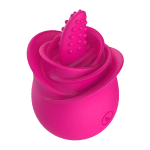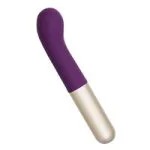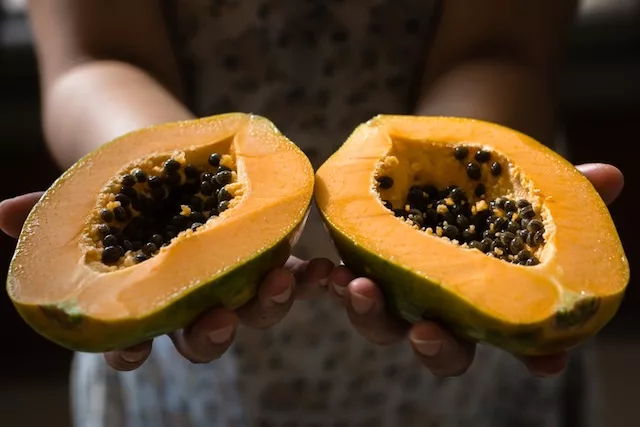There always seems to be one recipe style that dominates TikTok — you start seeing it pop up in all your feeds, but in a variety of different ways. That’s what’s happening with smoothie bowls, which have skyrocketed in popularity in recent years. This once-niche health food is now a mainstream staple in people’s diets.
These thick, creamy concoctions not only look appealing, they’re also packed with nutrient-dense fruits, vegetables, and grains that can boost your health in a variety of ways. “Smoothie bowls are an easy way to get your vitamins, minerals, and antioxidants in, supporting overall health, including heart health, by providing nutrients like potassium and fiber to help manage blood pressure,” says Michelle Routhenstein, R.D., a dietitian specializing in preventive cardiology.
It is worth mentioning that smoothies bowl Slightly different from regular smoothies – while they both have a base of blended fruits and vegetables, their main difference is in texture and appearance.
For example, regular smoothies tend to be thinner and more watery. You also tend to drink smoothies through a straw. Whereas smoothie bowls are thicker, creamier, served in a bowl, can have toppings added, and generally make for a more balanced, filling meal.
Check out these delicious and healthy smoothie bowl recipes designed to reduce bloating while giving you energy.
Smoothie Bowls and Bloating: Fact or Fad?
To understand if smoothie bowls can really help fight bloating, it’s important to examine their core ingredients. First, many smoothie bowls use a frozen fruit base, such as berries, bananas, or mangoes, mixed with a liquid like coconut water, almond milk, or Greek yogurt. Since smoothie bowls are served in a bowl, they often have toppings like granola, seeds, nuts, and even fresh cut fruit.
While these ingredients are certainly nutritious and can provide a boost of vitamins, minerals, and antioxidants, their role in bloating is complicated. First, determining whether a bowl of smoothie can actually cause or prevent bloating depends on the actual ingredients in it.
On the bright side, many smoothie bowls are high in fiber, since they contain lots of fruits and vegetables. This fiber can aid digestion and prevent constipation, both of which are common causes of bloating, explains Routhenstein. Additionally, some smoothie bowls contain ingredients like chia seeds or flax seeds, which contain soluble fiber that absorbs water in the digestive tract, thus easing discomfort.

Since smoothies are mostly liquid, they also tend to be hydrating but can help promote optimal digestive function.
While smoothie bowls are generally healthier than they are harmful, it’s important to note that some smoothie bowls, especially those purchased at stores or smoothie bars, can contain a lot of added sugar, which research suggests can, unfortunately, lead to digestive issues.
It’s also worth mentioning that some fruits and sweeteners commonly used in smoothie bowls may contain so-called FODMAPs (fermentable oligosaccharides, disaccharides, monosaccharides and polyols), which can cause bloating in sensitive people. If you happen to be sensitive to some of these FODMAP-rich foods, such as oats, quinoa, apples, apricots, grapes, mangoes, peaches, plums, etc., then you may very well experience bloating in your smoothie bowl.
Dairy products such as Greek yogurt are another potential culprit, as lactose intolerance affects a significant portion of the population. Gluten-containing ingredients, such as granola bars with added wheat, can also cause bloating in people with gluten sensitivity or celiac disease.
Last, but not least, another downside to smoothie bowls is that they lack the solid texture of regular food. According to a study published in the journal Science, if you replace a meal with a smoothie bowl, it may affect your feelings of fullness and hunger. Nutrients.
The Best Smoothie Bowl Recipes to Eliminate Bloating
Making a smoothie bowl can actually help reduce bloating, rather than causing it. First, you want to make sure you’re choosing the right base ingredients — preferably low-FODMAP fruits (berries, bananas, pineapple, or melon) if you’re sensitive to them, unsweetened liquids like almond milk or coconut water if you’re using something other than plain water, and you can add probiotics like Greek yogurt or kefir to help support gut health.
Here are some of the best smoothie bowl recipes to reduce bloating and boost your health.
Green Goddess Smoothie Bowl
This smoothie bowl is packed with hydrating and anti-inflammatory ingredients. Cucumber and pineapple work together to ease digestive discomfort and reduce bloating, while spinach is packed with essential vitamins and minerals. Plus, Routhenstein notes, the bowl contains chia seeds for added fiber and omega-3 fatty acids, and a splash of coconut water for extra hydration. Topped with fresh berries and a hint of honey, this smoothie bowl is not only nutritious but also delicious, making it the perfect start to your day.
according to: Spinach, cucumber, avocado, pineapple, coconut water
Ingredients: Chia seeds, hemp seeds, almond flakes, a little honey


Berry Smoothie Bowl
This smoothie bowl lives up to its name, packed with antioxidants and fiber to aid digestion and overall gut health. Adding Greek yogurt to your smoothie bowl adds probiotics to further support a healthy digestive system and strengthen your gut flora. For added crunch, top your bowl with granola, but choose one that’s lower in added sugars to prevent bloating. This combination of ingredients supports digestive health while also providing a delicious and satisfying meal to keep you energized throughout the day.
according to: Mixed berries, banana, Greek yogurt, coconut water
Ingredients: Granola (choose low-sugar option), sliced strawberries, a pinch of bee pollen
Tropical Paradise Smoothie Bowl
Want to feel like you’re on a tropical vacation without booking a flight? Try this mango and papaya smoothie, both of which are known for helping with digestion. Mangoes contain amylases, which help the body break down carbohydrates. These enzymes, similar to those in our saliva, kick-start the digestive process and make it easier for our bodies to absorb nutrients, explains Routhenstein.
Papaya also contains an enzyme called papain, which is known for its ability to digest protein. This enzyme can help break down complex proteins into smaller, more manageable peptides, which reduces digestive stress. On top of that, papaya is high in fiber, which also helps with overall gut health and regularity.
Blending these tropical fruits in a smoothie bowl creates a energizing combination that supports a healthy digestive system.
according to: Mango, papaya, coconut milk, pineapple
Ingredients: coconut flakes, almond flakes, lemon juice
Creamy Cucumber Mint Smoothie Bowl
Rosenstein noted that cucumbers have long been thought to help relieve indigestion because of their high water content. NutrientsCucumbers, along with some other vegetables like spinach and carrots, have even been found to be associated with a reduced risk of stomach problems.
For centuries, mint has been used to relieve stomach discomfort, such as bloating. The compounds in mint can help relax the muscles in your digestive tract, reducing cramping and bloating. If you’re feeling nauseous, mint may also temporarily relieve your symptoms.
according to: Cucumber, spinach, mint, coconut water, Greek yogurt
Ingredients: Avocado slices, hemp seeds, a pinch of red pepper flakes
What You Need to Know Before Making Your Own Smoothie Bowl
Before you head into the kitchen and start making your own smoothie bowls to reduce bloating, be sure to check the ingredient list of any store-bought granola or yogurt to make sure it meets your dietary needs. If you’re lactose intolerant, the last thing you need is dairy.
It can also be helpful to use natural sweeteners like stevia or monk fruit instead of real sugar cane to adjust the sweetness to your preference. Not only are they naturally calorie-free, they are also low on the glycemic index, meaning they have minimal impact on blood sugar levels, making them a better choice for people with diabetes or insulin resistance.
Summarize
Over time, and after some experimentation with different ingredients, you’ll find the smoothie bowl recipe that works best for your body so you can enjoy a delicious meal and keep bloating symptoms under control.


 Anal Beads
Anal Beads Anal Vibrators
Anal Vibrators Butt Plugs
Butt Plugs Prostate Massagers
Prostate Massagers
 Alien Dildos
Alien Dildos Realistic Dildos
Realistic Dildos
 Kegel Exercisers & Balls
Kegel Exercisers & Balls Classic Vibrating Eggs
Classic Vibrating Eggs Remote Vibrating Eggs
Remote Vibrating Eggs Vibrating Bullets
Vibrating Bullets
 Bullet Vibrators
Bullet Vibrators Classic Vibrators
Classic Vibrators Clitoral Vibrators
Clitoral Vibrators G-Spot Vibrators
G-Spot Vibrators Massage Wand Vibrators
Massage Wand Vibrators Rabbit Vibrators
Rabbit Vibrators Remote Vibrators
Remote Vibrators
 Pocket Stroker & Pussy Masturbators
Pocket Stroker & Pussy Masturbators Vibrating Masturbators
Vibrating Masturbators
 Cock Rings
Cock Rings Penis Pumps
Penis Pumps
 Wearable Vibrators
Wearable Vibrators Blindfolds, Masks & Gags
Blindfolds, Masks & Gags Bondage Kits
Bondage Kits Bondage Wear & Fetish Clothing
Bondage Wear & Fetish Clothing Restraints & Handcuffs
Restraints & Handcuffs Sex Swings
Sex Swings Ticklers, Paddles & Whips
Ticklers, Paddles & Whips




















